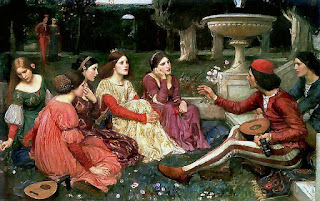A while ago, I came across this article about Dr. Sharon DeWitte of the University of South Carolina, who examines skeletons from the Middle Ages to determine what she can about their lifestyle. So far, her research has included over 600 skeletons from the 11th through 14th centuries. She has particularly studied skeletons from the period just before and just after the Black Death. She found something curious:
“I found that a significantly higher number of people were living to really old ages after the Black Death. Many people lived beyond the age of 50 and particularly above the age of 70,” DeWitte said. “I honestly was surprised by how dramatic the difference was in their survival. I’ve analyzed risks of mortality within the pre-and post-Black Death populations, and the preliminary results suggest lower overall risks of mortality after the Black Death.” [source]
She attributes this to a few things: those who survived the Plague were more likely to be from a segment of the population that was healthier to begin with. Also, the population loss led to a food surplus that promoted greater health. We have already noted, for instance, the Statutes of Laborers, rules that were established (again and again) post-Plague to try to keep peasants from moving to other estates. The shortage of laborers meant workers had new opportunities to seek better wages that would lead to better living conditions.
In the future, she intends to collaborate with others to look at genetic variation in humans before and after the Plague. Perhaps she can learn how the massive "die off" perhaps reduced certain genes that made humans more susceptible to Plague, leaving future generations healthier.
Tomorrow we'll look at some of Dr. DeWitte's other conclusions from examining skeletons.



















